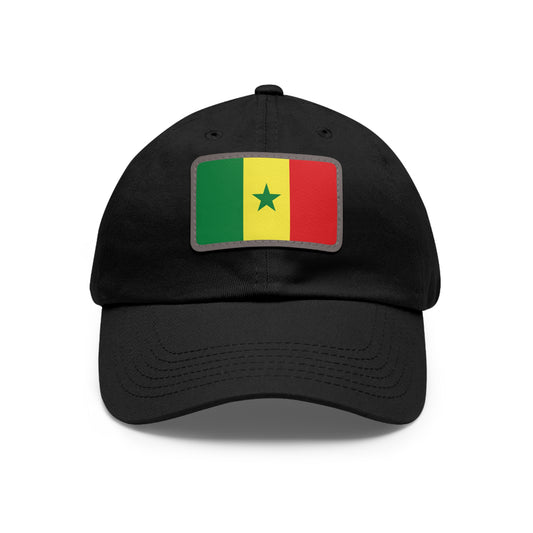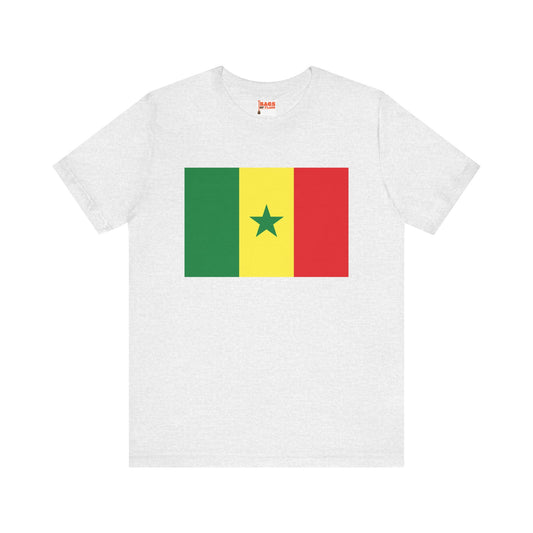-
Senegal T-shirts
Regular price $22.79 USDRegular priceUnit price / per -
Senegal Sweatshirt
Regular price $34.15 USDRegular priceUnit price / per -
Senegal Flag Sweatshirt
Regular price $34.15 USDRegular priceUnit price / per -
Senegal Pillow
Regular price $22.65 USDRegular priceUnit price / per -
Senegal Backpack
Regular price $59.79 USDRegular priceUnit price / per -
Senegal Leather Patch Hat
Regular price $18.85 USDRegular priceUnit price / per -
Senegal Mug
Regular price $11.65 USDRegular priceUnit price / per -
Senegal Trucker Cap
Regular price $14.90 USDRegular priceUnit price / per -
Senegal Hoodies
Regular price $34.40 USDRegular priceUnit price / per -
Senegal Flag Hoodies
Regular price $34.40 USDRegular priceUnit price / per -
Senegal Flag on T-shirt
Regular price $22.79 USDRegular priceUnit price / per -
Senegal Flag – 90x150 cm (3x5 ft)
Regular price $39.44 USDRegular priceUnit price / per -
Senegal National Flag – 90x150 cm (3x5 ft)
Regular price $34.16 USDRegular priceUnit price / per
Collection: Senegal
The Senegal flag, also known as the flag of Senegal, is a powerful symbol representing the Senegalese people's unity and pride. We will examine its design, historical context, symbolism, and current relevance, as well as explore some interesting additional facts and protocols associated with it.

Overview of the Senegal Flag's Design and Colors
The flag of Senegal features a bold and straightforward design that is comprised of three vertical bands of equal width. On the flag's hoist side is a vibrant green stripe, a golden yellow in the middle, and a deep red on the fly side. These three colors are striking in their visual appeal and loaded with significance that resonates with the Senegalese people and their values. Unlike many national flags, the Senegal flag abstains from incorporating national symbols or emblems into its design, opting instead for a clean and uncluttered appearance that focuses purely on the symbolism of its colors. This choice ensures the flag’s message is unambiguous, emphasizing unity, heritage, and the nation's vision. The arrangement of colors and the simplicity of the design make the Senegal flag easily recognizable and a powerful emblem of national pride.
Historical Context Surrounding the Senegal Flag
The journey to the present-day Senegal flag began shortly before the nation formally declared independence from France. On August 20, 1960, Senegal chose this emblem to represent its newfound sovereignty, shedding the colonial tricolor in favor of a design that spoke directly to the heart of its people and their aspirations. This was a significant period marked by a widespread wave of decolonization across Africa, where newly independent states sought symbols that could encapsulate their unique identities and collective ambitions.
The Senegal flag symbolized this broader movement with its striking colors and absence of national emblems. It is worth noting that Senegal had briefly been part of the Mali Federation, which dissolved in August 1960, leading to the adoption of the current flag. The decision to retain the green, yellow, and red vertical stripes, albeit in a slightly different arrangement than the federation's flag, underscored a commitment to maintaining continuity with the region's historical and cultural legacy while stepping into a new era of independence and self-determination.
Symbolism Embedded in the Flag's Design and Colors

At the heart of the Senegal flag, each hue is imbued with deep symbolism reflecting the nation’s identity, values, and aspirations. The green stripe at the flag's hoist is a nod to Islam, the majority religion, signifying faith and progress. It also mirrors the verdant landscapes of Senegal, hinting at the importance of agriculture to the country's economy and way of life. Moving to the center, the golden yellow band captures the essence of the nation’s wealth, not just in terms of its abundant natural resources like gold, but also representing the bright future and optimism of the Senegalese people.
This color can be seen as a symbol of the enlightenment and knowledge that the nation strives for. Lastly, the red stripe is a powerful tribute to the sacrifices made for Senegal's freedom, evoking the courage and blood of martyrs who laid down their lives in the quest for independence. This color also speaks to the spirit of sacrifice that permeates the national consciousness, emphasizing the readiness of its people to defend their country and maintain its freedoms. Together, these colors represent the nation’s ideals – faith, wealth, and sacrifice – weaving a narrative of resilience, prosperity, and unity central to the Senegalese identity.
The Senegal Flag in Contemporary Times
Today, the Senegal flag remains a ubiquitous emblem of national unity and pride, prominently featured during significant national observances such as Independence Day and in military ceremonies where it symbolizes the enduring spirit and sovereignty of the nation. Beyond these formal settings, the flag is deeply embedded in the everyday lives of the Senegalese people, serving as a constant reminder of their shared values and collective aspirations. It adorns schools, public buildings, and local communities, fostering a sense of national cohesion and identity among citizens.
Despite its widespread acceptance and reverence, the flag occasionally becomes the focal point of debates, particularly concerning its ability to represent all segments of Senegal's diverse society. These discussions often revolve around inclusivity issues and the flag's role in reflecting the nation's multifaceted identity. Nonetheless, such dialogues underscore the flag's significance as a living symbol of the nation's history, culture, and hopes for the future, making it a central figure in its ongoing narrative and efforts toward unity and progress.
Additional Facts and Protocols Related to the Senegal Flag
In the realm of flag etiquette and tradition, Senegal upholds specific practices that underscore the flag’s reverence and importance in national life. It is a standard protocol to hoist the flag at full mast in public areas and on government premises, especially during national holidays and ceremonies. The display of the flag is governed by rules meant to ensure its dignity is maintained at all times; for instance, it should always be positioned prominently and never be allowed to fall or drape on the ground.
An interesting protocol surrounding the flag is the manner in which it is raised and lowered; these actions are performed with solemnity, often accompanied by national anthems or patriotic songs, to instill a sense of national pride and unity. In educational institutions and at the beginning of significant public events, the flag’s hoisting serves as a ceremonial reminder of the country’s values and the collective aspirations of its people.
Moreover, when displayed alongside other flags, the Senegal flag takes a position of honor – to the viewer’s left when placed in a line. This respect extends to its handling, ensuring that when the flag is no longer fit for display due to wear or damage, it is disposed of in a respectful manner, typically through a ceremonial burning, to honor the symbolism and the national sentiments it embodies. This careful attention to protocol highlights the deep respect the Senegalese have for their national flag as a symbol of their country's sovereignty and identity.


























